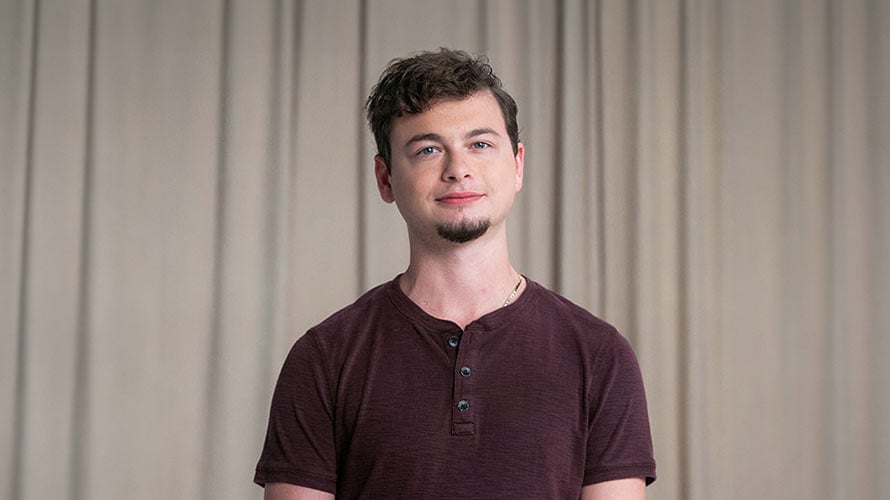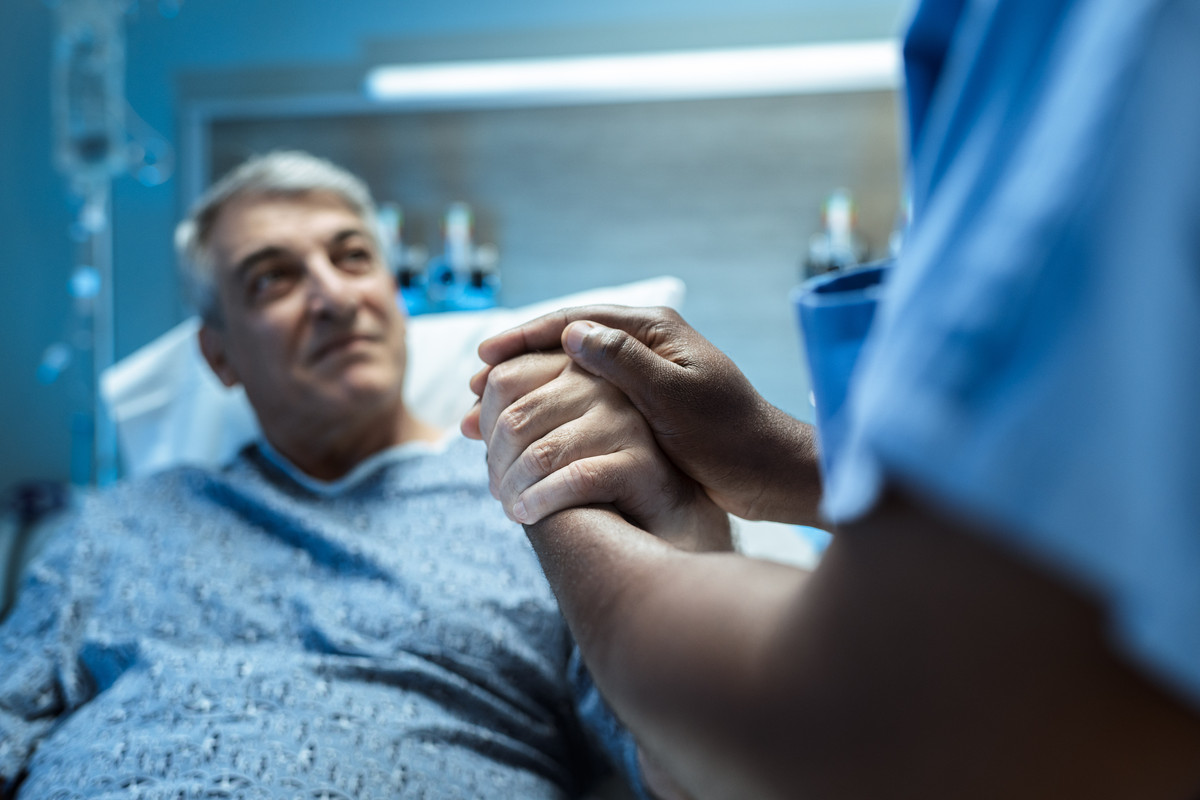Chemotherapy for Testicular Cancer
Testicular cancer develops in the testes, two small male reproductive glands in the scrotum that produce sperm and testosterone. Most testicular tumors result from abnormal changes in the germ cells, which create sperm. The precise triggers of these harmful mutations are unknown, although certain factors—such as an undescended testicle and a family history of testicular cancer—are believed to increase the risk. Common symptoms include a painless lump in the affected testicle, swelling and a feeling of heaviness in the scrotum and dull pain in the lower abdomen or groin.
While testicular cancer is relatively rare, it is highly treatable, especially when detected early. Treatment options may include surgery, radiation therapy and chemotherapy. Chemo is often used for certain aggressive types of testicular cancer and tumors that have spread beyond the testicle.
How does chemotherapy for testicular cancer work?
Many chemo drugs can be used to treat testicular cancer, and each works in a slightly different way. However, the overarching goal of chemotherapy is to prevent cancerous cells from growing and spreading by destroying the cells or interfering with their ability to reproduce.

Tommy turned 18 years old and received news he was shocked to hear: testicular cancer. "Moving to Moffitt saved my life," he says.
Tommy, Testicular Cancer Survivor
Request an AppointmentEach cell in the body contains deoxyribonucleic acid (DNA), which carries the genetic information necessary for the cell’s proper development, function and reproduction. Cancer can damage cellular DNA, causing it to provide erroneous instructions that lead to uncontrolled cell growth and division. Excess abnormal cells can then build up, bind together and form tumors.
Some chemotherapy drugs work by binding to damaged DNA, interfering with its ability to program the cell to grow uncontrollably. Others cause cancerous cells to self-destruct.
What does chemotherapy for testicular cancer involve?
Chemotherapy uses potent cancer-fighting medications that may be administered intravenously or orally. Once in the bloodstream, the drugs circulate throughout the body to seek out and destroy rapidly dividing cells, such as testicular cancer cells.
Research suggests that combination chemotherapy can be more effective than single-agent chemotherapy. For this reason, testicular cancer treatment often involves BEP chemotherapy, which uses a combination of three different medications:
- Bleomycin
- Etoposide
- Cisplatin (Platinol)
Chemo is delivered in cycles, with each cycle consisting of a treatment phase followed by a rest period to allow the body time to recover and produce healthy cells. A full chemotherapy regimen typically includes several cycles, which may involve a week of daily treatment sessions followed by three weeks of rest. The number of cycles and overall duration of treatment can vary depending on the specific medications prescribed and other factors. Most regimens are completed within three to six months.
What happens during chemotherapy for testicular cancer?
Chemo may be given in a hospital, infusion center or physician’s office, although some oral medications can be taken at home. During each in-office session, a healthcare professional will:
- Check and record the patient’s blood pressure, pulse, body temperature, respiration rate, height and weight to determine the appropriate medication dose.
- Place a soft intravenous (IV) line in the patient’s arm or hand, unless a port or catheter is already in place.
- Draw a blood sample through the IV, port or catheter to check blood counts.
- Perform a brief physical examination.
- Order the required dose of medication.
- Administer fluids for hydration.
- Provide pre-chemotherapy medications to reduce nausea and prevent allergic reactions.
- Begin the infusion process, which may last several hours.
- Remove the IV line (if used) at the end of the session.
- Check the patient’s heart rate, blood pressure and breathing.
- Explain the possible side effects and how to manage them.
Many patients find it comfortable to wear loose, warm clothing and bring certain items, such as a blanket, sweater, socks, water bottle, books, journal, sketchpad or a device with downloaded movies, podcasts, audiobooks or music.
What are the risks and possible complications of chemotherapy for testicular cancer?
Chemo medications are designed to effectively target and destroy fast-growing cells, including cancer cells. However, because these powerful drugs can also affect healthy, fast-growing cells—such as those in the hair follicles, bone marrow and digestive tract—there is a risk of side effects. Although the side effects of chemotherapy can be challenging, they are usually temporary and improve once the treatment is complete.
Common short-term side effects and complications of chemotherapy for testicular cancer include:
- Extreme fatigue
- Loss of appetite
- Nausea and vomiting
- Constipation or diarrhea
- Hair loss
- Mouth sores
- Skin and nail changes
- Increased risk of infection
- Impaired cognitive function (“chemo brain”)
- Nerve damage (neuropathy)


Rated High Performing in Urology
Schedule an AppointmentWhat to expect during recovery from chemotherapy for testicular cancer
After completing chemotherapy for testicular cancer, the patient can generally expect to return to their usual routine within 12 months, and any side effects should gradually improve and resolve. Although the weakness and fatigue may persist a bit longer, a gradual reintroduction of daily activities, along with gentle exercises and physical therapy as advised, can support strength and energy recovery. Regular follow-up appointments will be scheduled to monitor progress, manage any long-term side effects and check for signs of cancer recurrence.
How effective is chemotherapy for testicular cancer?
Chemo can be effective for treating testicular cancer, particularly when incorporated into a comprehensive treatment plan. While individual responses can vary, chemotherapy has greatly improved outcomes and quality of life for many testicular cancer patients.
Frequently asked questions (FAQs) about chemotherapy for testicular cancer
The following FAQs-related article provides additional information about chemo for testicular cancer:
Benefit from world-class care at Moffitt Cancer Center
Many different chemotherapy drugs and delivery plans can be used for testicular cancer. Therefore, it is essential to work with a multispecialty team that can tailor the prescription to the patient’s specific needs. The medical oncologists in Moffitt’s nationally recognized Urologic Oncology Program evaluate a wide range of factors, including the stage and cell type of the tumor and the patient’s ability to tolerate high doses of strong medications, to create an individualized treatment plan. At Moffitt, supportive care providers also play a key role in testicular cancer treatment, helping to manage any side effects of chemo and ensure the best possible quality of life.
If you have questions about chemotherapy for testicular cancer, you can request an appointment with a specialist at Moffitt by calling 1-888-663-3488 or submitting a new patient registration form online. We do not require referrals.
Treatment
